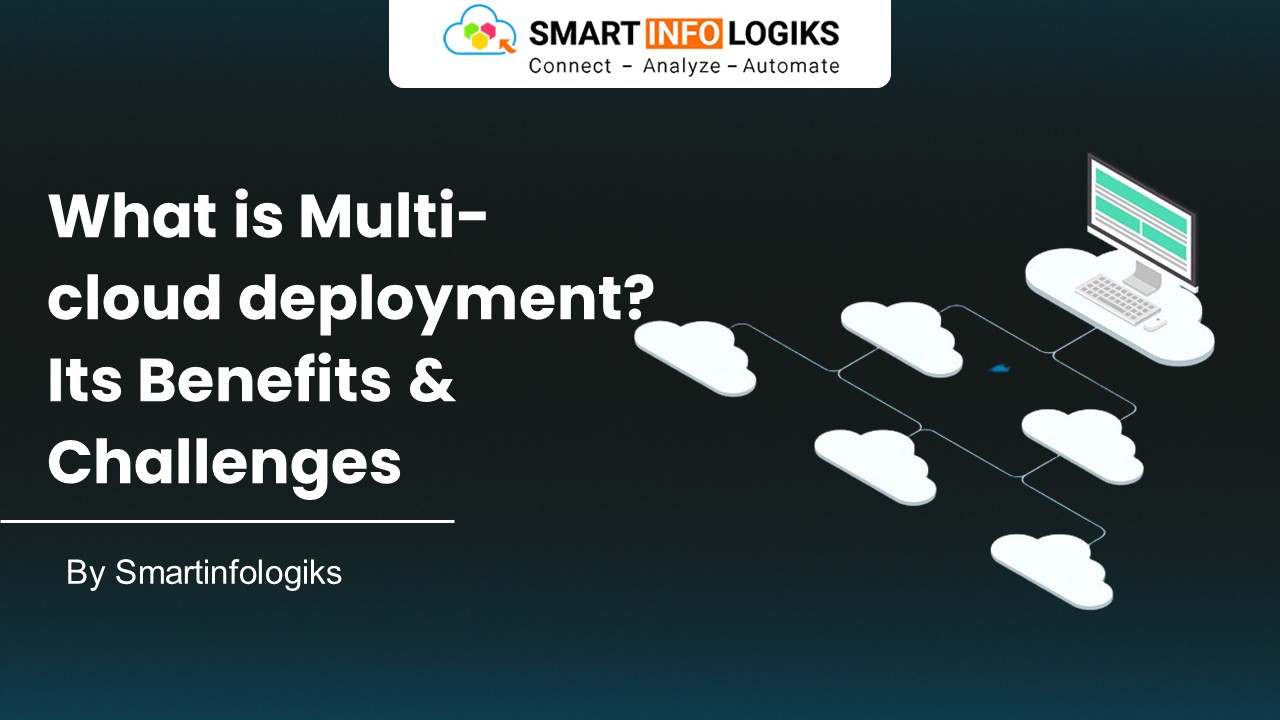What is Multi-cloud deployment Its Benefits & Challenges - PowerPoint PPT Presentation
Title:
What is Multi-cloud deployment Its Benefits & Challenges
Description:
Multi-cloud deployment refers to the strategy of employing multiple cloud computing platforms or providers to host various elements of an application or system. – PowerPoint PPT presentation
Number of Views:3
Title: What is Multi-cloud deployment Its Benefits & Challenges
1
What is Multi-cloud deployment? Its Benefits
Challenges
By Smartinfologiks
2
Introduction
- Explore the concept of multi-cloud deployment,
its advantages and disadvantages, as well as the
role of automation in managing and optimizing
multi-cloud environments. Its essential to
understand why organizations choose multi-cloud
strategies and the complexities involved.
Discover how automation helps address challenges
and improve infrastructure resilience across
multiple cloud platforms. ? - Learn about the pros and cons of multi-cloud
deployment, including avoiding vendor lock-in,
flexibility, cost optimization, complexity, and
financial considerations. Discover the importance
of choosing an agnostic automation and
configuration management tool, such as SysOPS,
for effective multi-cloud management.?
3
Why Do Organizations Choose Multi-Cloud
Deployment?
4
- Enterprises opt for Multi-cloud deployment
because it offers them the freedom to choose from
a variety of cloud computing platforms or
providers, allowing them to leverage the specific
strengths, functionalities, and cost savings
offered by each. Since no single cloud provider
can fulfil all the requirements of an
organization, adopting a multi-cloud approach
becomes necessary. - Multi-cloud deployment becomes crucial when
different tools or services are needed to address
specific aspects of an organizations cloud
operations. By utilizing multiple cloud
providers, organizations can access a broader
range of capabilities and functionalities that
are not available within a single providers
offering. This flexibility enables organizations
to tailor their cloud infrastructure to their
precise needs and benefit from the best tools
available in the market.
5
Challenges faced during multi-cloud deployment
- Teams may face challenges when they lack the
expertise required to manage each cloud platform
the specific services they offer. - Managing multiple environments and working with
multiple vendors can introduce significant
complexity. - Maintaining robust security and risk management
is crucial when operating across different cloud
environments and during transitions between
clouds.
6
Pros Cons of Multi-Cloud deployment
7
Pros
- Avoiding vendor lock-in
Adopting a multi-cloud deployment strategy offers
enterprises the freedom to avoid being overly
dependent on a single cloud provider, as the
alignment between a provider and an organization
may evolve. This misalignment can lead to
escalated costs and ineffective service delivery.
Moreover, transitioning to a different provider
due to such misalignment can be both costly and
time-consuming. By leveraging multi-cloud
environments, organizations can mitigate the risk
of vendor lock-in and reduce their reliance on a
single provider.
8
- Flexibility
In todays ever-changing business landscape, the
ability to remain flexible is crucial.
Multi-cloud deployments provide organizations
with the necessary agility to adapt quickly to
ongoing and rapid changes. By utilizing multiple
cloud platforms simultaneously, businesses can
effectively meet diverse data requirements and
ensure data availability.
9
Cons
- Complexity
The adoption of a single cloud provider can
present a steep learning curve for teams, as they
need to familiarize themselves with the
providers processes, systems, and services.
However, when multiple cloud providers are
adopted, ensuring teams remain competent across
all environments can become a major challenge.
The expansion to multiple providers may require
additional effort to maintain expertise and
proficiency across different platforms.
10
- Heavy costs
Multi-cloud deployments come with cost-related
challenges that organizations need to consider.
Firstly, there is an additional cost incurred
from the traffic and management layer required to
facilitate communication between multiple cloud
environments. This can lead to unnecessary
expenses if organizations do not fully understand
the cost disparities among different cloud
providers.
11
Conclusion
SysOPS is one of the pioneers of using
abstractions to manage configurations
effectively. It offers reusable components that
have been developed by experts in various
technologies. This means that SysOPS users can
leverage these components without needing
specialized cloud skills. In other words, SysOPS
provides access to expert resources, allowing
users to benefit from their expertise without
requiring them to become experts themselves.
12
Thank You
sales01_at_smartinfologiks.com
91 7400064691
www.smartinfologiks.com































